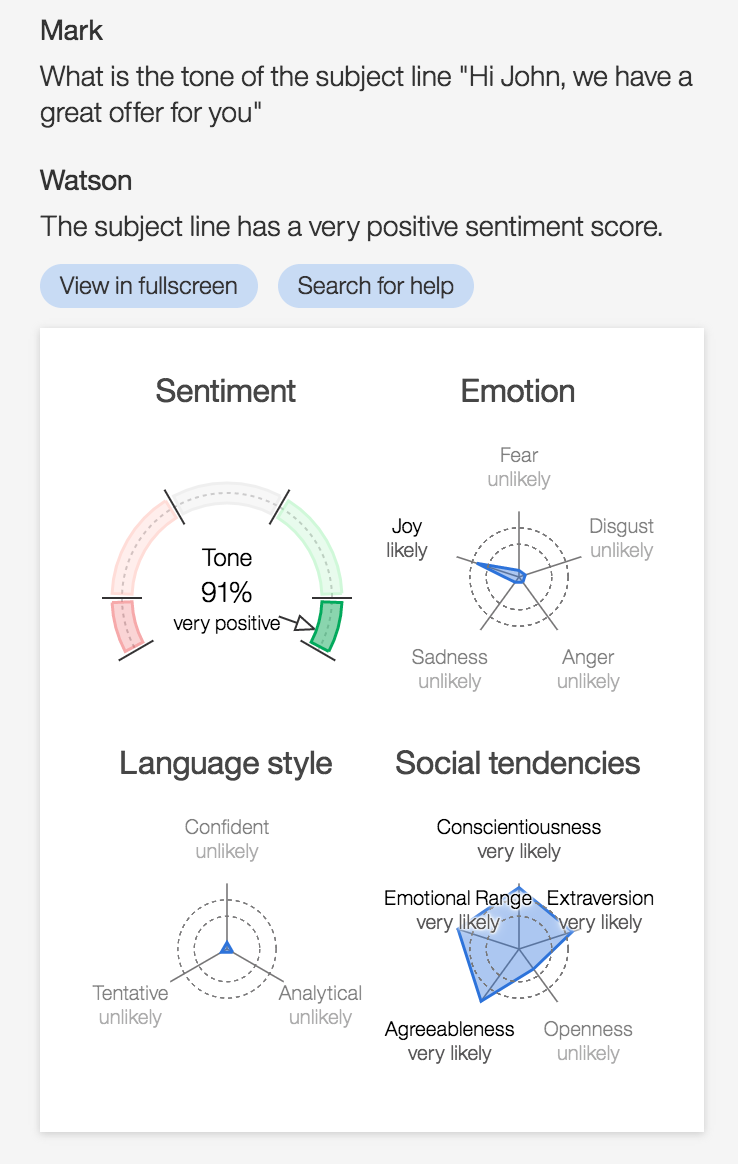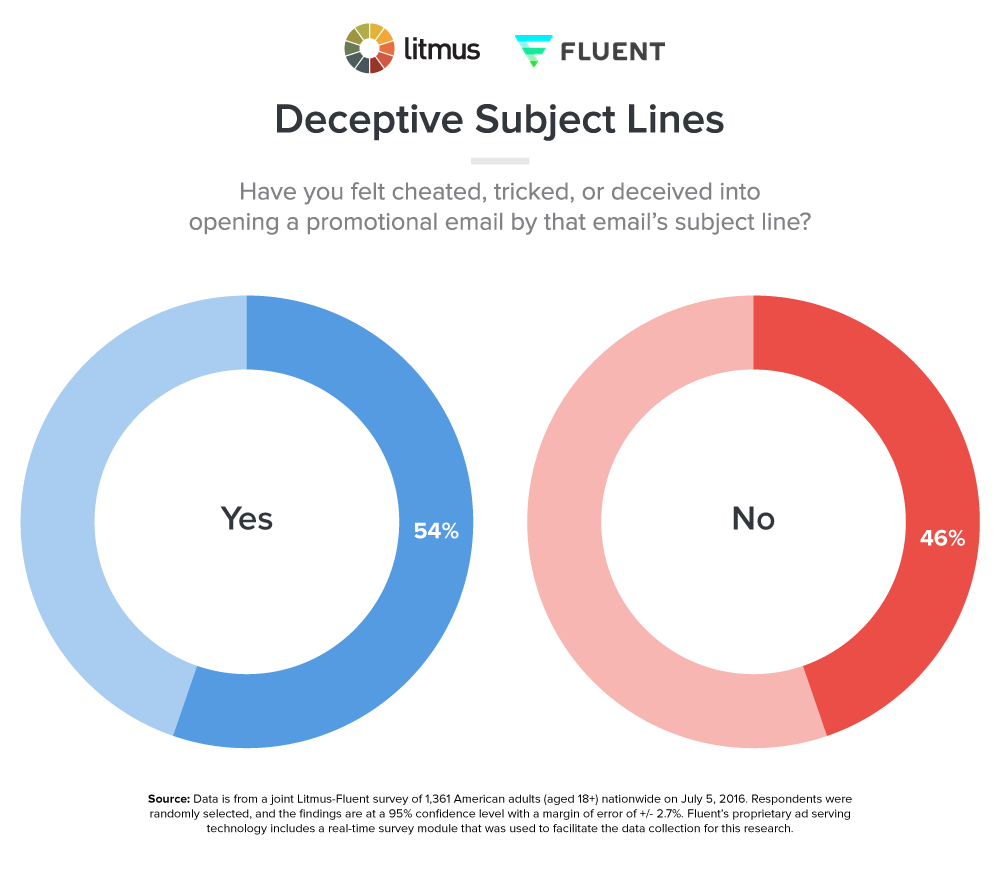Great. It was all fine when the robots were coming for the IT tech jobs. When they were going for the data jobs. But content marketing? No, please. I've got rent to pay.

Subject lines are up there for the most important parts of a successful email marketing campaign.
Basically, if recipients choose to open your emails, you'll be able to start them down the pipeline. And for those who are already interested? Well, they can be moved to make a purchase. So, the subject line can be the difference between your emails being read, and being ignored.
Using AI can streamline a process that could take a pretty long time, into seconds.
This means taking laborious work away from your more creative team members, letting them be more, well, creative. It also means using the most effective results of past campaigns and using that formula again and again. I mean, AI tools can write email subject lines that are 98% better than humans, after all.
JOANN even saw a 10% email open uplift, and a 57% email click uplift with Phrasee, a AI language-optimisation tool.
So, what's the science behind a subject line?
According to Phrasee:
Linguistic diversity + effective multivariate testing = email open rate uplift
Data published by the company has shown that multivariate testing email subject lines using a diverse set of subject line language can lead to an open rate uptick of 5% - 10%.
So using an AI tool can speed up this pretty complex and time consuming data analysis.
Two technologies that have driven AI progress, in order to get it to this point, are natural language processing (NLP), and natural language generation (NLG).
NLP is when a machine 'reads' text. This then leads to the text being turned into a code the machine can process and understand.
NLG is when the machine uses that code to generate its own words. Think NLP as the reader, and NLG as the writer.
So, in this way, AI is better equipped to write email subject lines than us mere humans. Basically, it excels at analysing vast amounts of data, extracting insights from that data, and then writing mathematically-impactful subject lines from this data. Phrasee routinely uses 100,000+ emails as a dataset - that's a lot of data to learn from.

Although interest has been high, Cloud Consulting firm Oracle Marketing has found that results haven't always been consistent.
Among brands that didn't find success, the most common complaints included:
- The lift in email performance wasn’t sustainable beyond a few months,
- The results in general didn’t justify the expense
Oracle suggests that the reason some brands don't see results is due to the size of the business implementing them.
Basically, this whole thing works well with scale; a ML system needs to explore a bunch of language to understand which words and patterns of words resonate with your audience. So a large list is essential.
Alongside a large list you can, according to Oracle, improve your chances of success through:
- Optimising subject lines for clicks, over opens
- Rejecting Off-brand subject lines
- Testing AI subject lines against human created control subject lines
But let's get into detail with some of these AI-subject-line-generation-best-practises. Starting with recommending you:
Optimise...for the correct metrics.
Like we've mentioned before, it's a common misperception that the only goal of a subject line is to get opens. Clicks, by interested subscribers, are much more valuable. Unless you're sending a re-engagement email, opens are a secondary metric.
So it's important to optimise your subjects for opens, as you'll be attracting those with a potential to buy, over those who are merely interested in the creativity of your subject line. Overly eye-catching, 'gotcha' subject lines can lead to fatigue and unsubscribes after the reader discovers they've been 'tricked' into opening an email they have no interest in.
Optimising for clicks better aligns subject line content with email content, which better maintains trust and longer-lasting subscriber relationships. So, your AI will create subject lines which are appealing to the established audience, with effective, concise email lines that don't go overboard with the cleverness.
Optimise by...Staying On Brand
Expanding on the idea of testing AI subject lines against human created control subject lines, comes the maintaining of your brand tone of voice.
AI writing tools do not understand your carefully crafted, hand-shaped brand, so can suggest things that are off-brand. I mean, if you have a well-established funeral parlour, you don't want some robot recommending puns about 80s pop culture. Unless that's your jam, dude.
“One of our travel brands ran their first test last month and the winning subject line started with ‘RE:’ like it was a reply to an email,” says Mark Sambor, Senior Director at Oracle Marketing Cloud. “They obviously had a level of discomfort with this.”
So, it's important to involve your teammates in charge of your brand copy, creatives, and messaging.
But remember, AI has a "first-mover advantage", according to Hubspot. So, by using a tool like Phrasee, you can improve your performance with each hour you put into it. The more and more data you collect on what subject lines work best, the better the output will be.
"It's a virtuous cycle," suggests Paul Roetzer.
"A flywheel that spins faster and faster the longer you stick with it".
You'll want to focus on emails with high achieving metrics, and run those subject lines through the analyser. This'll mean the AI can determine the overall tones, and highlight which words and emotions that cause your customers to respond.
“This particular (algorithm) takes this huge amount of language data, deconstructs it into individual parameters, takes away beliefs and biases, turns it into ones and zeros, and looks at the patterns in the numerical data,” said Parry Malm, CEO of Phrasee.
Phrasee used NLP techniques to look at qualities like directness, and how offbeat the language was. Then, it tracked performance metrics such as clicks, conversions, opens and unsubscribes.
Optimise...Across Platforms
Add specificity by making sure you're optimising, and optimising across platforms.
Keep an eye on how subject lines perform across different devices when collecting effective examples to analyse with your email AI tool. Remember, a majority of emails are read on mobile devices, so make sure you're not just appealing to a PC audience.
Optimise...by Creating Subject Lines with A/B Testing.
In the olden days it took the combination of a good copywriter, and a bunch of experimentation, to make a really good subject line. Especially a really good subject line that appealed to the right audience. But AI has streamlined this to a T.
AI uses algorithms that generate subject lines that will attract a higher click rate, through analysing the results of each individual marketing campaign to optimise and improve your subject lines over time.
Somewhere else AI helps and can be used to test what level works best for your audience, is personalisation.
One-size-fits-all marketing is a thing of the past. AI can help with this.
74% of marketers say targeted personalisation increases customer engagement, with a 20% increase in sales when using personalised experiences.
So, with AI in your tool kit, your personalisation can go beyond throwing in a customer's name. With the right customer data and AI, you can shake up the subject line in new ways. You could use location specific details, or even include information about their specific niche. Basically, anything to provide something of value to the customer, in a way that catches their eye.



